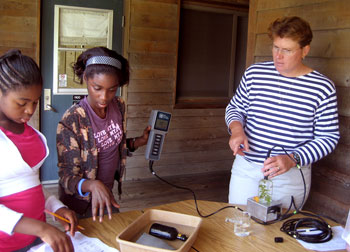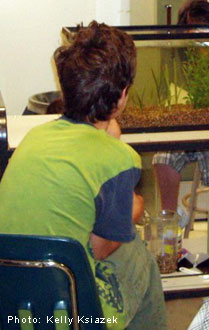
The following set of classroom activities were created by Kelly Ksiazek, a Boulder, CO high school biology teacher, aided by the expertise of her scientist educator team, including a research scientist, a graduate student, and an undergraduate student. The activities follow the 5-E format (Engagement, Exploration, Explanation, Extension, Evaluation) and also match the content presented in the pages of this Seagrass Module. Each activity link includes instructor instructions as well as downloadable student worksheets and other resources.
Learn About
Seagrasses are underwater plants
Seagrasses are found in shallow coastal waters
Seagrasses provide a home to many animals
Seagrasses keep the water clean
Explore Trends
Seagrass meadows are declining worldwide
Eutrophication causes seagrass decline
Disease and a storm killed Virginia Coastal Bay seagrasses
Boating activity impacts Florida seagrass meadows
Restoration Attempts
Investigate Current Research
Global Research to Better Understand Seagrasses in their Environment
Research into Seagrass Restoration
Conservation
Additional Resources
Dr. Laura Murray’s website Access to additional submersed aquatic vegetation and educational material.
Seagrass.LI Long Island's seagrass conservation website; focuses on eelgrass and contains lots of great seagrass information and photos.
Bay Grasses Restoration and Projects MD Department of Natural Resources website focusing on the species of seagrass or submerged aquatic vegetation inhabiting the Chesapeake Bay.
SAV in Chesapeake and Coastal Bays Virginia Institute of Marine Science website containing a great deal of info on seagrass, including aerial and field observations and access to scientific papers.





